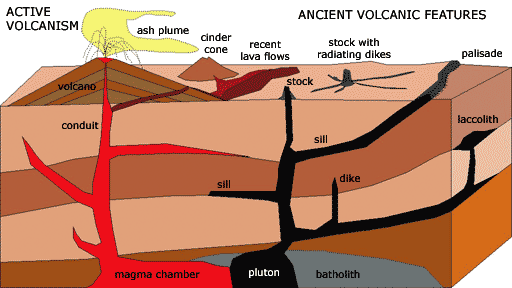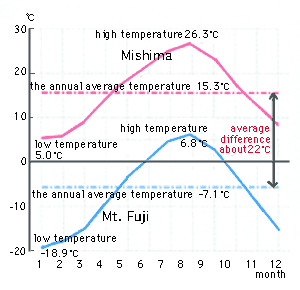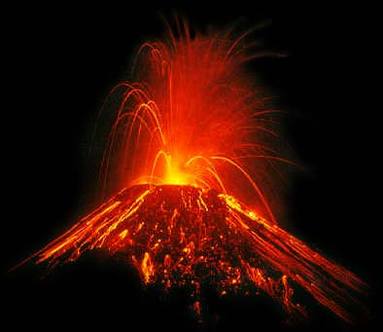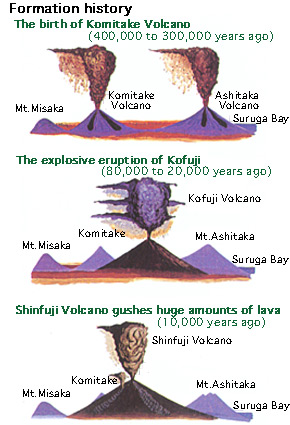Mount Fuji is the highest mountain in Japan. Not
only is it a mountain but also a volcano. Geologists believe that the volcano
is still active to this day but the eruption of it is not expected any time
soon. Mount Fuji is an example of a triple junction. Triple junction is when
three different plate tectonics collide. The three tectonic plates that met
each other came from Eurasia, the Philippines, and North America. They were
called Amurian plate (Eurasia), Okhotsk plate (North America), lastly Filipino
plate. This volcano is an extrusive volcanic landform which is tall and steep
containing a rock type called basalt.
 |
| Cross Section of a Stratovolcano |
 |
| Distribution of tectonics plates and active volcanoes around Japan |
 |
| Chances of lahars increases due to Ice caps. In 10,000 years, Mount Fuji will erupt because the tectonic pressure will increase. Mount Fuji is still an active volcano so as time progress it will erupt more than once. Because of the many eruptions the volcano’s volcanic cone will decompose. Since it is so cold at the top of the volcanoes, ice caps and glaciers will be created at the peak of Mount Fuji which will make the top of the Mount Fuji be surround by volcanic mudflows on the slopes of the volcano. These are called lahars. When lahars flow down the volcano, it will destroy everything that is on the sides of Mount Fuji. With everything being destroyed by lahars, there is a great chance for mass wasting to happen, this will make the landscape expand in weathering. As Mount Fuji weathers away, the vent of the magma is going to harden. Since the magma hardened |
 |
In 100,000,000 years, the volcano that formed with the help of Mount Fuji
will be the next Mount Fuji because of the leftovers of Mount Fuji and the area
it is at as I said above. Since it is 100,000,000 years now, the landscape
would just be a mountain because “volcanoes become inactive when there is no
more molten magma for them to erupt. Volcanoes form when there is a heat
source, either in the crust or below in the mantle, that heats up the rocks and
melts them, creating magma that can be erupted through a volcano. Obviously,
after a while the heat source might die down again, or maybe plate tectonics
will push the heat source to a different area. With no more heat, all the magma
at the volcano will solidify, and there will be nothing left to erupt. At this
point, the volcano can be considered extinct.”
http://intheplaygroundofgiants.com/wp-content/uploads/2013/07/Figure-2.2.7.jpg
http://www.theguardian.com/world/2014/jul/15/japan-mount-fuji-eruption-earthquake-pressure
http://pubs.usgs.gov/of/2004/1007/images/volcanic.gif
http://intheplaygroundofgiants.com/geology-of-central-oregon/the-geology-of-volcanoes-and-volcanism/
With
10,000, 1,000,000, and 100,000,000 years passing by, Mount Fuji will just be
another large mountain standing in Japan after another volcano forms in its landscape.
 |
| Diagram of old volcano features and new volcano features building off of the old volcano |
References
http://www.theguardian.com/world/2014/jul/15/japan-mount-fuji-eruption-earthquake-pressure
http://pubs.usgs.gov/of/2004/1007/images/volcanic.gif
http://intheplaygroundofgiants.com/geology-of-central-oregon/the-geology-of-volcanoes-and-volcanism/











